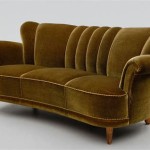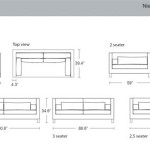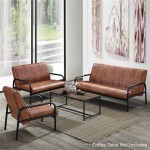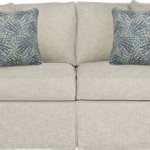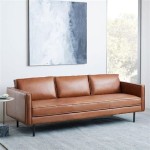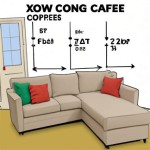What is Sofa in Arabic?
Understanding the Arabic translation of "sofa" requires delving into the nuances of the Arabic language and its regional variations. While a single, universally accepted equivalent doesn't exist, several terms convey the meaning of "sofa" depending on the specific dialect and cultural context.
One of the most common terms used across the Arab world is "كنبة" (pronounced "kanaba"). This word is widely understood and used in countries like Egypt, Jordan, Lebanon, Palestine, and Syria. Its versatility makes it a suitable translation for various types of seating furniture, from traditional sofas to more modern couches.
Another frequently used term is "أريكة" (pronounced "areeka"). This word is particularly prevalent in the Gulf countries, such as Saudi Arabia, Kuwait, Qatar, and the United Arab Emirates. While similar in meaning to "kanaba," "areeka" sometimes implies a more formal or elaborate piece of furniture.
The word "ديوان" (pronounced "diwan") presents a slightly different connotation. While it can refer to a sofa or couch, it more accurately describes a specific type of seating arrangement traditionally found in Arab homes. A diwan typically consists of cushions placed against a wall, often covered in rich fabrics and used for receiving guests. Therefore, while related to the concept of a sofa, it refers to a particular cultural and social practice.
Regional variations further complicate the translation of "sofa." For example, in some North African dialects, words derived from the French word "fauteuil" (armchair) are used to refer to sofas, reflecting the region's historical ties to France. In Morocco, one might hear "فوطوي" (pronounced "footwee"), while in Algeria and Tunisia, "فوطة" (pronounced "foota") is sometimes used.
The specific type of sofa can also influence the Arabic term used. For instance, a "sofa bed" might be referred to as "سرير أريكة" (pronounced "sareer areeka"), literally translating to "bed sofa" or "couch bed." Similarly, a "sectional sofa" might be described using a more descriptive phrase like "أريكة مقطعية" (pronounced "areeka muqatta'iya"), meaning "sectional sofa."
The evolution of language and the adoption of loanwords further enrich the lexicon surrounding seating furniture. In some contexts, the English word "sofa" itself is used, particularly in more cosmopolitan urban areas. This integration highlights the dynamic nature of language and the influence of globalization.
When choosing the appropriate Arabic term for "sofa," understanding the audience and context is paramount. Using "kanaba" in Egypt will be readily understood, while "areeka" would be more appropriate in the Gulf. Considering the specific type of sofa and the cultural context will ensure accurate and effective communication.
Beyond simple translation, understanding the cultural significance of seating furniture in Arab societies provides a deeper appreciation for the nuances of the language. The diwan, for example, represents more than just a place to sit; it symbolizes hospitality and social gathering, deeply ingrained in Arab culture.
Online translation tools can offer a starting point, but they often lack the sensitivity to regional dialects and cultural context. Consulting Arabic dictionaries, language learning resources, or native speakers will provide a more comprehensive understanding of the various terms and their appropriate usage.
The richness and complexity of the Arabic language are reflected in the multiple ways to express the concept of "sofa." From the widely used "kanaba" and "areeka" to the culturally specific "diwan" and the influence of loanwords, the translation of "sofa" becomes a journey into the diverse linguistic landscape of the Arab world.
Learning more about the different terms for "sofa" in Arabic not only enhances communication but also provides insights into the cultural practices and historical influences that have shaped the language. This exploration underscores the importance of moving beyond literal translations to achieve true understanding and effective cross-cultural communication.
The choice of the most appropriate term depends on several factors including regional dialect, the specific type of sofa, and even the formality of the situation. Being mindful of these factors ensures clear communication and demonstrates respect for the richness and diversity of the Arabic language.
Furthermore, the increasing use of the English word "sofa" in some Arabic-speaking regions reflects the ongoing evolution of language and the impact of globalization. This adoption highlights the dynamic nature of language and its adaptability to changing cultural influences.
Ultimately, grasping the various nuances of translating "sofa" into Arabic requires both linguistic knowledge and cultural sensitivity. This understanding allows for more effective communication and fosters a deeper appreciation for the complexities of the Arabic language and its diverse dialects.

Bohemian Design Oriental Floor Seating Ethnic Sofa Arabic Singapore

Arabic Sofa Majlis Furniture Home Living Sofas On Carou

Arabic Majlis Floor Seating Corner Sofa Set Couch Kilim Rug Bohemian Decor

Bohemian Design Oriental Floor Seating Ethnic Sofa Arabic Singapore

Arabic Seating Sofa Living Room Turkish Jalsa Oriental Floor Set Cushion Moroccan Big Bohemian Furniture Kilim Multicolor

8 Thickness L Sofa Set Arabic Oriental Floor Seating Flo

Bohemian Design Oriental Floor Seating Ethnic Sofa Arabic Singapore

Bohemian Design Oriental Floor Seating Ethnic Sofa Arabic Singapore

Sff 22 Arabic Majlis Sofa In Stan Buy Furniture

4 Thickness Arabic Majlis Floor Sofa Seating Jalsa

